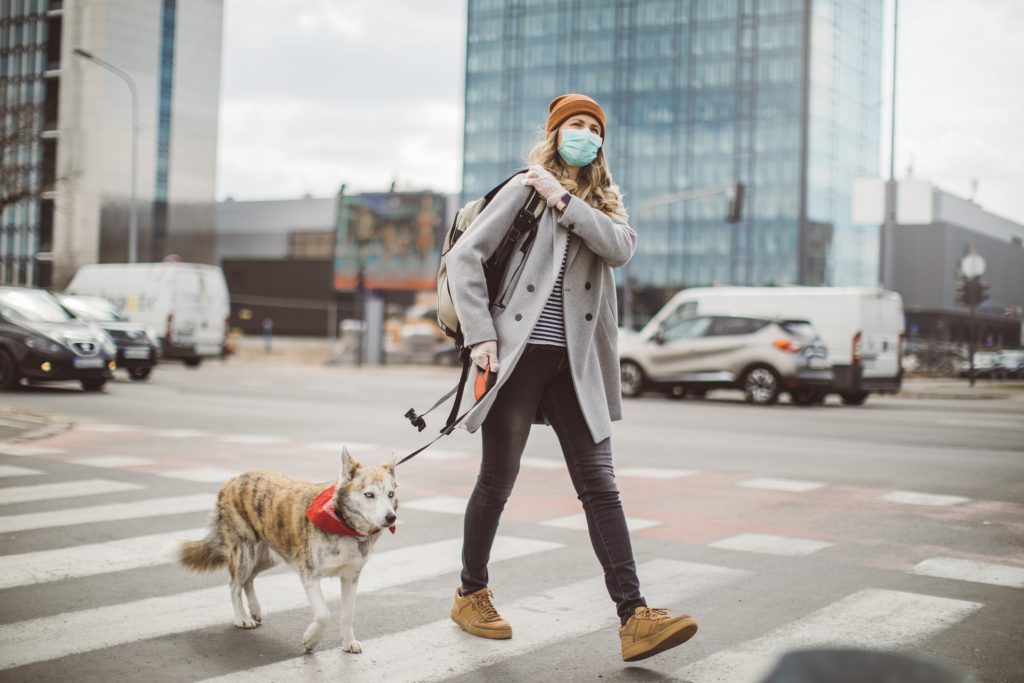Times of uncertainty have an undeniable effect on people’s attitudes, behavior, and their use of language. New words are coined and old clichés are resurrected as political leaders, media and the public alike make sense of the shifting goalposts and rapidly-changing rules in a crisis situation.
Today we’re examining what effect the coronavirus pandemic is having on the words we use, whether it’s through introducing new terms in the public vocabulary, making our language more polarized, or sending us scurrying for old, familiar clichés.

The rapid spread of new vocabulary
A significant crisis is often followed by the swift adoption of a new set of vocabulary. The current COVID-19 crisis has prompted the Merriam-Webster Dictionary to make an unscheduled update to introduce and revise words associated with the pandemic, reflecting the fact that terms like “social distancing”, “super-spreader” and “contact tracing” have made the leap to everyday use in an astonishingly short time. Other concepts that have recently entered the common lexicon include “flattening the curve”, “lockdown”, and “self-isolation”.
While many of these terms are brand new to us, some will have been common knowledge to a select group before their rise in popularity—in this case, likely epidemiologists. Contact tracing is a technique these professionals have been using for years to tackle outbreaks of many other diseases, such as the Ebola virus. Google trend data for the phrase shows that interest in the term far predates the coronavirus outbreak, albeit at substantially lower levels than at present.
The appearance of neologisms during times of significant change is equally fast: while the EU referendum in the UK promptly inspired terms like “Brexit”, “Brexiteer” and “Remainer”, the pandemic has so far produced terms like “Covidiot” (a person who behaves selfishly and irresponsibly during a pandemic), “Doomscrolling” (spending an unhealthy amount of time consuming every last bit of depressing news online) and “Quarintini” (an alcoholic drink enjoyed in self-isolation).
It’s clear that linguistic creativity still flourishes in unsettling times, while social media helps new terms spread far and wide.
Metaphors and clichés take center stage
Metaphors of war have become a major part of the rhetoric in the COVID-19 crisis, at least in the UK. There’s talk of fighting an “invisible enemy” and of health care professionals being at the “frontline” of the battle. The aim may be to unite people and to encourage everyone to support the leadership and one another, but perhaps likening a mindless virus to a foreign invader isn’t all that helpful. If we view ourselves as being “at war”, we’re not as likely to pause to examine what effect our own decisions (political and individual) have had on the spread of the virus.
Alongside war terminology, clichés are inevitable during crises. So far we’ve been told that “life as we know it has ended” and “things will get worse before they get better,” but that “we’re all in this together”, “we will rise to the challenge”, and “come through this stronger than ever”.
While these messages may very well inspire many people, others see these banal lines as a cop-out – meaningless babble when what we desperately need is accurate information. However, calls for “speaking truth to power” are often countered with another cliché, “now is not the time for politics”.
The polarization of language
As divisions between different viewpoints deepen, the gravity of a crisis is reflected in our choice of words; adjectives like “incompetent” no longer cut it. The worsening of the pandemic in the UK saw the critics of Boris Johnson (UK Prime Minister) take to Twitter and get the colorful #BorisTheButcher trending, while Johnson’s supporters were affectionately calling him the #PeoplesPrimeMinister.
The gulf between the admirers and critics of President Donald Trump has similarly deepened, with his supporters finding comfort in their trust in their leader while his critics’ despair grows day by day.
This kind of hero vs. villain language is not reserved to politics either. Many people are also keeping a keen eye on the behavior of businesses and even their own neighbors during this pandemic, with “naming and shaming” rampant on social media. How long the effects will linger after the crisis is over remains to be seen.

When words lose their power
The type of language we use in testing times matters – or at least it does in that other crisis that has taken a backseat in news coverage and conversation since the COVID-19 pandemic started to dominate the headlines. Research shows that when it comes to climate change, the media has the power to shape public perception, affect behavior, and influence policy with its choice of terminology. And it appears that we have become desensitized to the terms “climate change” and “global warming” – they just don’t sound that alarming anymore.
In order to represent the gravity of climate change more accurately, The Guardian has updated its style guide. The new preferred terms include “climate emergency”, “climate crisis” and “climate breakdown”, while “global heating” is favored over the more benign-sounding “global warming”. And while we’re not there yet, warnings about a “climate apocalypse” have appeared in the papers, too.
The comfort factor of clichés
There’s been talk in Europe of replicating the “Blitz spirit” of WW2 in the face of the COVID-19 crisis. A few old wartime photos have resurfaced in the social media as a result, and in one of them, a woman sits on top of a pile of rubble sipping tea. Clichés are, perhaps, the linguistic equivalent to a warm, comforting drink among destruction; a way to cling on to a sense of normalcy despite fear and uncertainty. If so, it could explain why mundane hashtags like #MotivationMonday are still very much alive on social media and show no sign of going away.
It’s likely that, as with so many aspects of life, whatever the world looks like after coronavirus has been contained and overcome, it will have left a lasting effect on our language.
Not sure if your language is hitting home? Consider an external communication audit to make sure your customers are getting the right message, and/or an internal communication audit to ensure your team is all on the same page.














